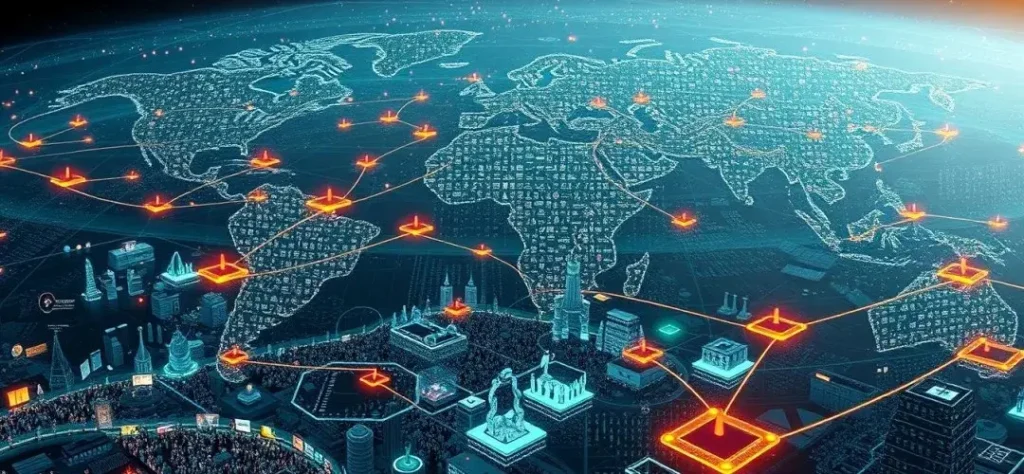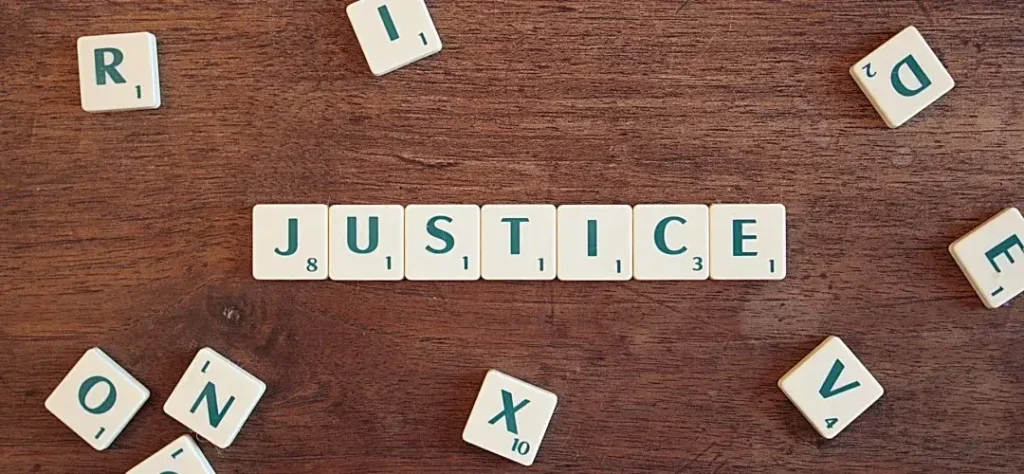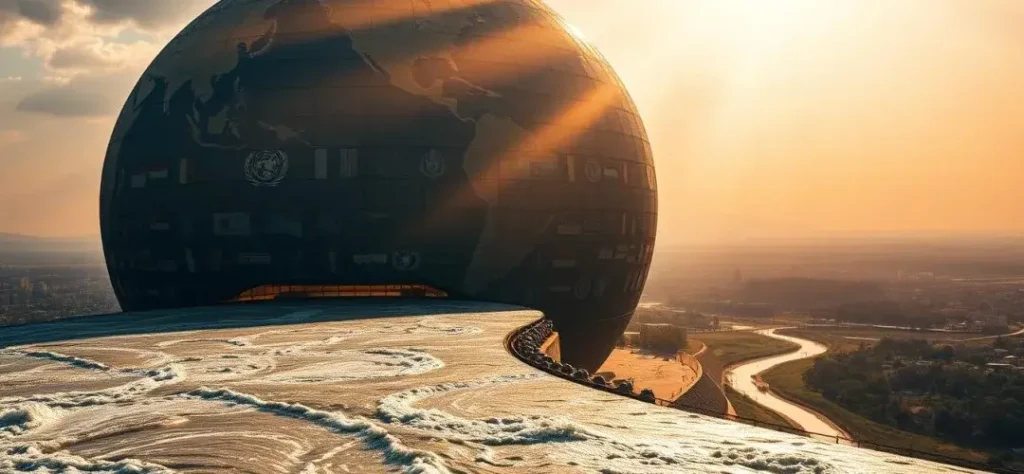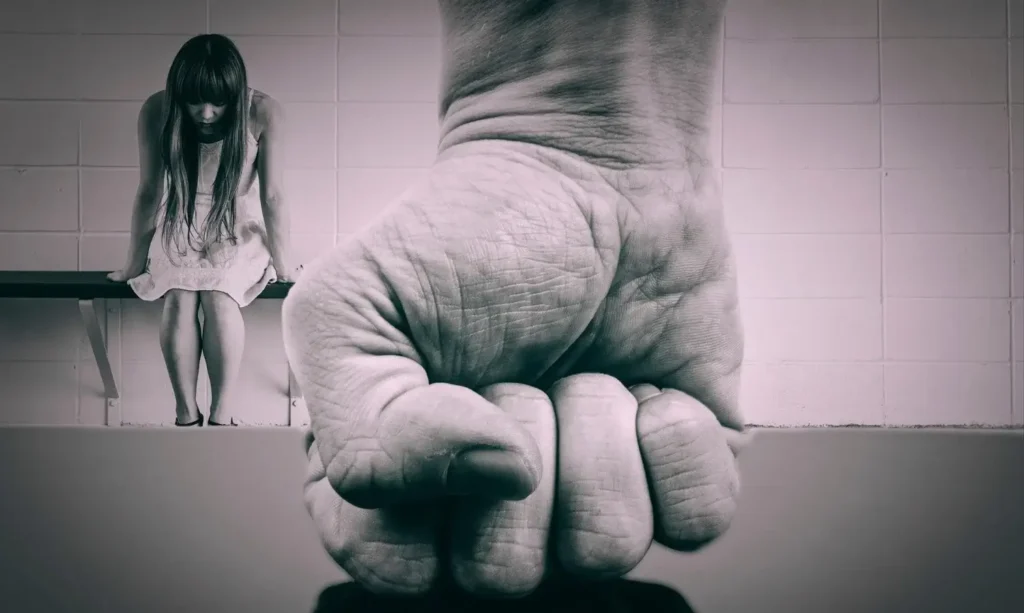Seeing a peaceful protest for basic freedoms made me understand human rights’ power. It showed me how international law is a living force for human dignity.
International human rights law is our promise to protect basic freedoms everywhere. It’s a key framework that tells us how people should be treated, no matter who they are.
This guide will take you through the world of human rights. We’ll look at how laws protect basic freedoms and defend individual dignity.
Learning about international human rights law is more than just studying. It’s about seeing our shared humanity and the universal principles that unite us.
Key Takeaways
- Human rights are universal fundamental freedoms
- International law provides a critical protection framework
- Global systems work to defend individual dignity
- Legal mechanisms evolve to address emerging human rights challenges
- Every individual has inherent rights that transcend national boundaries
Table of Contents
Understanding the Foundations of International Human Rights Law
International human rights law is key to protecting dignity and freedoms worldwide. It came from the horrors of World War II, showing the need for global rights protection.
This law has grown by recognizing common human values and creating legal ways to protect them. It shows how different cultures and countries work together to safeguard human rights.
Origins of Human Rights Treaties
The history of international human rights law is marked by important moments:
- The United Nations Charter (1945)
- Universal Declaration of Human Rights (1948)
- Geneva Conventions (1949)
- International Covenant on Civil and Political Rights (1966)
Key International Human Rights Instruments
Important documents in human rights law give clear guidelines for protecting rights. They set standards that apply everywhere:
- Universal Declaration of Human Rights – A key document outlining basic human rights
- International Covenant on Economic, Social, and Cultural Rights
- Convention Against Torture
- Convention on the Elimination of All Forms of Discrimination
Fundamental Human Rights Principles
The main ideas of human rights law focus on the dignity and equality of all people. These ideas are:
- Universality
- Inalienability
- Indivisibility
- Interdependence
Knowing these basics shows why human rights are so important in our world. Human rights law keeps growing, tackling new issues and helping the most at-risk people everywhere.
The Role of United Nations in Human Rights Protection
The United Nations is a key player in protecting human rights worldwide. It is the largest international organization, working to keep individual dignity and freedom safe. It does this across many countries.
Key ways to protect human rights include:
- Human Rights Council: Investigates possible violations
- Office of the High Commissioner for Human Rights: Watches over human rights globally
- Universal Periodic Review: Checks each country’s human rights record
UN human rights groups work hard to set global standards. They make international laws, do investigations, and find ways to solve big human rights problems.
“Human rights are the foundation of freedom, justice, and peace in the world.” – United Nations Declaration
The UN uses many strategies to protect human rights:
- Creating detailed human rights plans
- Helping those who are most at risk
- Using diplomatic pressure on countries that don’t follow the rules
- Supporting local human rights efforts
Even with big challenges, the United Nations keeps working to support and defend human rights everywhere. Its wide range of efforts is key to solving tough global human rights problems.
Regional Human Rights Systems and Their Impact
Human rights issues are not just about international treaties. Regional systems are key in protecting freedoms and tackling specific challenges. They offer tailored protections for different cultures and legal settings.
These systems add layers of protection. They help those who might find it hard to get justice through global channels.
European Human Rights Framework
The European system is a top model for regional protection. It has:
- Comprehensive legal mechanisms
- Strong judicial enforcement
- Robust individual complaint procedures
- Extensive jurisprudence from the European Court of Human Rights
Inter-American Human Rights System
The Inter-American system tackles historical human rights issues, mainly in Latin America. It focuses on:
- Transitional justice mechanisms
- Protection of indigenous rights
- Combating systemic discrimination
- Addressing historical human rights violations
African Human Rights Mechanism
The African framework blends cultural views with international standards. It tackles global issues with:
- Collective rights recognition
- Understanding human dignity in context
- Community-based protections
- Innovative economic and social rights approaches
Each system shows the complexity and flexibility of human rights protection. They prove how targeted efforts can tackle unique challenges worldwide.
Human Rights in Worldwide: Current Challenges and Issues
The world of human rights is facing tough challenges. Governments, groups, and people are dealing with big issues. These issues test how well we protect human rights globally.
There are key areas that need urgent action:
- Technological surveillance and privacy violations
- Economic inequality and systemic discrimination
- Climate change impacts on vulnerable populations
- Refugee and migration rights challenges
Digital tech has changed how we see human rights. Artificial intelligence and advanced monitoring systems threaten our privacy. They make us question our rights to privacy and consent.
Economic gaps hurt human rights progress. Poor countries struggle more, with the most vulnerable facing big inequalities.
“Human rights are not a privilege, but a fundamental guarantee for all humanity.” – United Nations Human Rights Commission
Climate change is a big human rights issue. It affects basic needs like water, food, and shelter for many. Indigenous and poor areas suffer the worst from environmental changes.
Global groups are working together to tackle these problems. They aim to stop human rights abuses through worldwide efforts.
Enforcement Mechanisms for International Human Rights
Protecting human rights needs strong enforcement. This ensures nations and individuals face consequences for breaking the rules. International law sets up key ways to keep everyone in line and bring justice.
For human rights to be enforced, many systems must work together. They help stop and fix violations.
International Courts and Tribunals
Important courts play a big role in enforcing human rights:
- The International Criminal Court (ICC) goes after serious human rights crimes.
- Regional courts focus on human rights issues.
- United Nations tribunals look into big violations.
State Compliance and Sanctions
Countries face penalties for not following human rights rules. Groups watch how countries act and suggest actions.
- Economic sanctions are used.
- Diplomatic pressure is applied.
- A country’s reputation can suffer.
Role of NGOs in Enforcement
Non-governmental organizations are key in watching over human rights. They:
- Record human rights abuses.
- Help courts with evidence.
- Push for big changes.
- Help victims with legal help.
These systems make sure human rights are a global focus. They protect people all over the world.
Individual Rights and State Obligations

It’s key to know about individual rights and what states must do. International law sets out clear rules. These rules tell governments what they must do for their people and to stop human rights abuses.
States have three main duties to protect human rights:
- Respect Rights: Governments must not directly harm individual rights
- Protect Rights: They must stop others from hurting people’s basic freedoms
- Fulfill Rights: They must make sure people can use and get their rights
People have ways to fight against human rights abuses. They can:
- Go to their country’s courts
- Ask for help from international human rights courts
- Get support from international groups
The link between individual rights and state duties makes a system of checks and balances. If states don’t keep their promises, global bodies can look into it. They might suggest actions or even impose penalties.
“Human rights are not a privilege granted by the few, but a fundamental right of all people.” – Unknown Human Rights Advocate
Human Rights Violations and International Response
Understanding human rights abuses worldwide is complex. It involves looking at the big challenges facing global communities. These violations are serious breaches of human dignity and international law.
Human rights violations cover many areas. They include systemic oppression and discrimination in institutions.
Types of Human Rights Violations
- Political persecution and suppression of free speech
- Systematic discrimination against minority groups
- Torture and cruel, inhuman treatment
- Denial of basic economic and social rights
- Forced labor and human trafficking
International Intervention Methods
Human rights activism is key in fighting global injustices. It uses various strategies:
- Diplomatic negotiations
- Economic sanctions
- United Nations resolutions
- International legal proceedings
- Humanitarian aid interventions
Case Studies of Major Violations
| Region | Primary Violation | International Response |
|---|---|---|
| Syria | Civil War Atrocities | UN Investigations, Sanctions |
| Myanmar | Rohingya Persecution | International Criminal Court Referral |
| North Korea | Systematic Human Rights Suppression | Diplomatic Pressure, Economic Sanctions |
Addressing human rights abuses worldwide needs ongoing global effort and teamwork.
The Future of Human Rights Protection

The world of protecting human rights is changing fast. New technologies and big global problems are changing how we keep human rights safe in the 21st century.
New tech brings both good and bad for human rights. AI and digital tools help us share human rights issues. But they also raise concerns about privacy and surveillance.
- Digital documentation of human rights violations
- Advanced monitoring technologies
- Global communication networks
- Increased transparency mechanisms
Climate change is also a big issue for human rights. It’s causing new problems for people who are already at risk. We need new ways to protect human rights in different places.
| Future Human Rights Challenge | Potential Strategic Response |
|---|---|
| Technological Surveillance | Enhanced Digital Privacy Frameworks |
| Climate Displacement | International Migration Protections |
| AI Ethics | Global Regulatory Standards |
International groups must keep up with these new challenges. Proactive strategies that think ahead about tech and environment changes are key. They help keep human rights safe all over the world.
Understanding these complex issues is important for supporting human rights efforts globally. Keep learning, getting involved, and speaking out. These actions are essential in tackling future human rights problems.
Human Rights Organizations and Their Impact
Human rights groups are key in fighting for basic rights everywhere. They work hard to watch over, report, and speak up for those facing big injustices. This is all over the world.
There are many types of human rights groups, each with its own way of making a difference. Some main kinds include:
- International watchdog groups
- Grassroots community advocacy networks
- Legal defense and support organizations
- Research and documentation centers
Big names like Amnesty International and Human Rights Watch have come up with smart plans to tackle big problems. They do things like:
- Documenting human rights abuses
- Helping with legal issues for those who are left out
- Starting big awareness campaigns
- Pushing governments and big groups to act
These groups use many ways to make a change. They talk to diplomats, run big campaigns, and use the law. They help turn important ideas into real help for those who need it most.
Human rights activism represents a powerful force for global justice and social transformation.
Knowing about these important groups can help you support their vital work. They fight for dignity and rights all over the world.
Conclusion
Understanding human rights worldwide is a big task that needs dedication and learning. International human rights law is key for protecting dignity globally. Your actions can help change society and support those in need.
The fight for human rights is complex and never-ending. Despite progress, many challenges remain. We all must work together to fight violations and respect human rights everywhere.
Remember, change begins with awareness and action. Learn about human rights laws, support groups, and stay updated on global issues. This helps create a fairer world.
Your efforts to advance human rights are vital. By learning about laws, facing global issues, and supporting human rights, you help change our world. You are a key player in our global community.
FAQ
What are human rights in international law?
Human rights are basic rights and freedoms for everyone worldwide. They don’t depend on nationality, race, gender, or social status. These rights are protected by international laws, ensuring everyone’s dignity and safety.
How do international human rights laws protect individuals?
These laws set global standards for how people should be treated. They create ways to hold states accountable and provide legal frameworks. This protects individuals from discrimination, torture, and other abuses.
What are the most important international human rights documents?
Key documents include the Universal Declaration of Human Rights (1948) and the International Covenants on Civil and Political Rights. There are also UN conventions on women’s rights, children’s rights, and disability rights.
How can individuals report human rights violations?
You can report violations through the UN Human Rights Office, regional courts, and national institutions. Organizations like Amnesty International and Human Rights Watch also help. It’s important to document evidence and seek legal help.
What challenges exist in enforcing international human rights laws?
Challenges include state sovereignty, lack of enforcement, and political resistance. Economic and cultural differences also play a role. Holding violators accountable is complex.
What role do NGOs play in human rights protection?
NGOs monitor violations, document abuses, and advocate for change. They provide legal support, raise awareness, and pressure governments. This helps protect human rights.
How do regional human rights systems complement global efforts?
Regional systems like the European Court of Human Rights address local issues. They offer legal recourse and complement UN efforts. This makes human rights protection more accessible.
What are emerging human rights challenges in the 21st century?
Challenges include digital privacy, AI impacts, climate change, and economic inequality. There’s also discrimination online, refugee rights, and human rights in pandemics and technology.
How can individuals contribute to human rights protection?
You can stay informed, support organizations, and participate in campaigns. Report violations, promote education, and vote for rights-conscious leaders. Speak out against discrimination in your community.
What is the future of international human rights law?
The future involves adapting to technology, addressing climate migration, and strengthening enforcement. It’s about protecting digital rights, promoting intersectional rights, and developing flexible legal frameworks.










